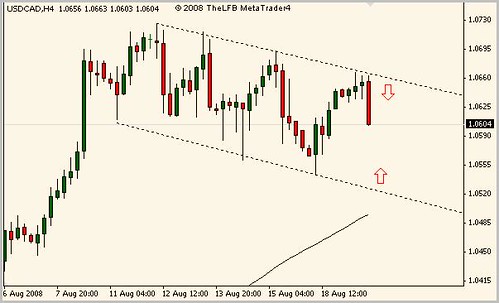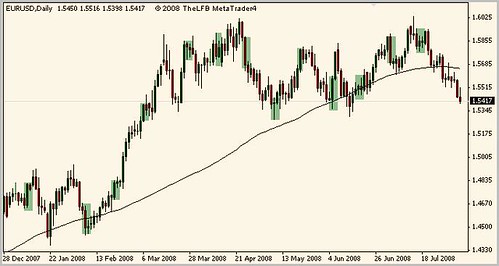Will the ECB really cut rates?
Written by A Forex View From Afar on Tuesday, August 26, 2008In the last few days, a number of analysts have appeared in the mainstream media saying that the ECB will cut rates at the following meetings. The big question now is will they really cut or is it just guesswork? Unlike the Fed, the ECB has one objective: keeping inflation close to 2% over the medium term. In the last few quarters the ECB had failed to reach its only objective, since the CPI number is running at 4%, twice as big as the inflation target. The ECB took the decision to raise in July because the outlook for inflation still lies to the upside.
Many of the voices that say the ECB will cut sometime in the near future base their outlook on the fact that lower growth will drag down inflation. Last time that this happened (or was supposed to happen) was in the 70’s; it was referred to as stagflation (no growth together with high inflation), but did the lower growth bring inflation down? The answer is a big no. However, the high interest rates set by the Fed's Paul Volcker did bring inflation down; higher rates did the job that reduced lending could not achieve.
The ECB has said a few times that the second and third quarter read will be weaker, but still the Governing Council decided to increase the interest rate. This clearly shows that the bank is determined to follow its goal of fighting inflation. Furthermore, a central bank must be clear and to some extent transparent in its decision. How confident can the markets be in a bank that a quarter ago said they wanted to fight inflation and then the next quarter cut the rate to ensure growth, while this was not on its priority lists? Not too much it may seem, nobody likes a central bank that flip-flops.
According the TheLFB Analyst team, Traders may want to keep an eye on the dollar’s valuation right now. The dollar is strengthening on the rumor that the yield differential will decrease. Even though traders should see that the chances for a hike from the Fed are very low, it must be remembered that there is just as much of a low chance of a number of rate cuts from the ECB.

 | Posted in »
| Posted in »


